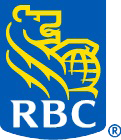Your child may explore gender identity and sexual orientation at the same time or separately. They are learning about who they are and how to communicate it to the world around them, just like you have learned to explore and develop your own gender identity and expression throughout your life.
Understanding the language related to sex, gender and sexual identity can support your child in this exploration. It may also help you to talk with your child about these concepts if you know more about them and how they relate to one another, either through personal experience or through your own learning. Language related to gender is expanding and evolving as we learn more about the range of identities and experiences people have, so it is normal if some of these concepts are new to you.
Here are a few terms to start with:
Sex is usually assigned at birth based on characteristics such as our genitals and other biological and physiological traits. A child that has a penis is said to be male, a child who has a vulva is said to be female. A child who does not fit into one of those two categories is said to be intersex.
Gender often refers to the roles, behaviours, expressions and identities that are expected within a culture and society for different genders including girls, women, boys, men, non-binary and two-spirit genders.
Gender identity is each person’s internal and individual understanding of their own gender. A person’s gender identity may be the same or different from their assumed gender based on the sex they were assigned at birth. Some people identify as women/girls or men/boys. Others see themselves as both or neither (agender). For some, their gender identity is not fixed and changes over time (known as “gender fluid”).
For a long time in some cultures, people have thought about gender as being either a girl/women or boy/man (the idea that there are only two genders is called a “gender binary”). For other cultures, there has always been a range of gender identities that exist on a spectrum. Non-binary is a term for people whose gender identity does not fall only within the gender binary.
Gender questioning refers to someone who is exploring their gender identity.
Gender expression is how we express our gender identity. This can include how we look, how we talk, our behaviour, our name and our pronouns (for example: she/her, he/him, they/them, she/he, she/them, ze/zir, xe/xem). Like gender identity, gender expression is fluid and can change over time.
Gender creative children are those who identify and express their gender in ways that differ from what their society and culture expect. Adults would be referred to as gender diverse or gender non-conforming.
Cisgender (cis) are people whose gender identity matches their assigned sex at birth (penis = male; vulva = female).
Transgender (trans) describe a wide range of people whose gender identity or gender expression is different from what is expected for their assigned sex based on the norms (“unwritten rules”) in their society. Transgender people may or may not choose to undergo gender confirming surgeries when they are older.
Sexual orientation (sexuality) refers to our pattern of emotional, physical and/or sexual attraction to others. A person can be attracted to those of the same gender, different genders or both. Sexual orientation is separate from gender identity. A person’s sexual orientation may change throughout their lifetime, as can their gender identity.
Two-Spirit is a term used by some Indigenous communities. It includes cultural, spiritual, gender and sexual identity. A Two-Spirit person may or may not identity as 2SLGBTQIA+, and a 2SLGBTQIA+ Indigenous person may or may not identity as Two-Spirit. Two-Spirit should only be used for Indigenous people due to the cultural and spiritual context of the term. Learn more about Two-Spirit resources, groups and initiatives, here.





